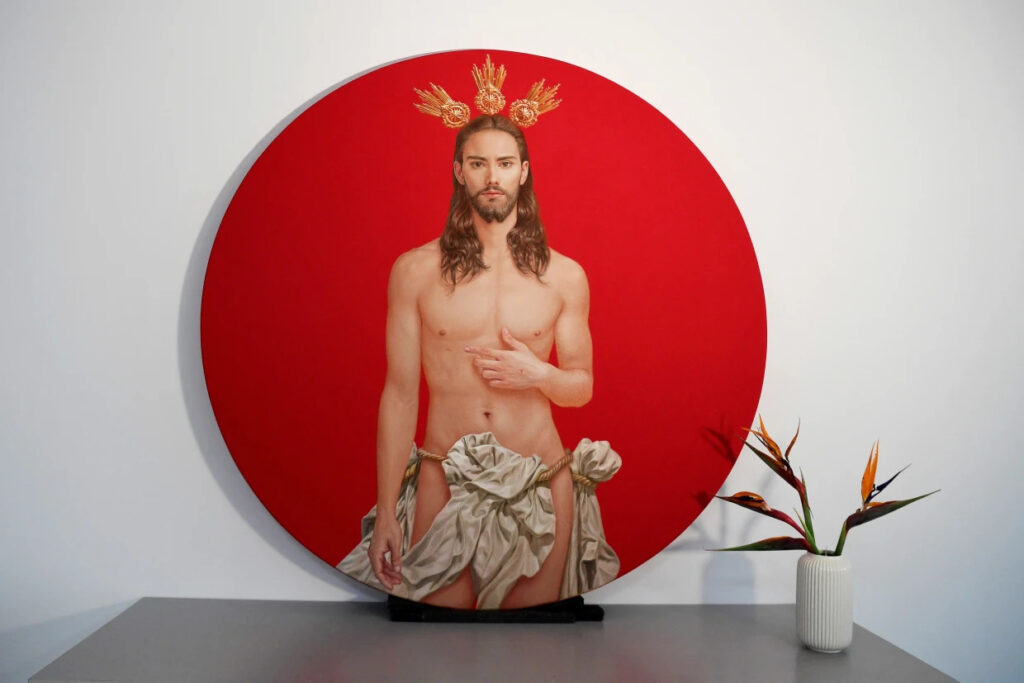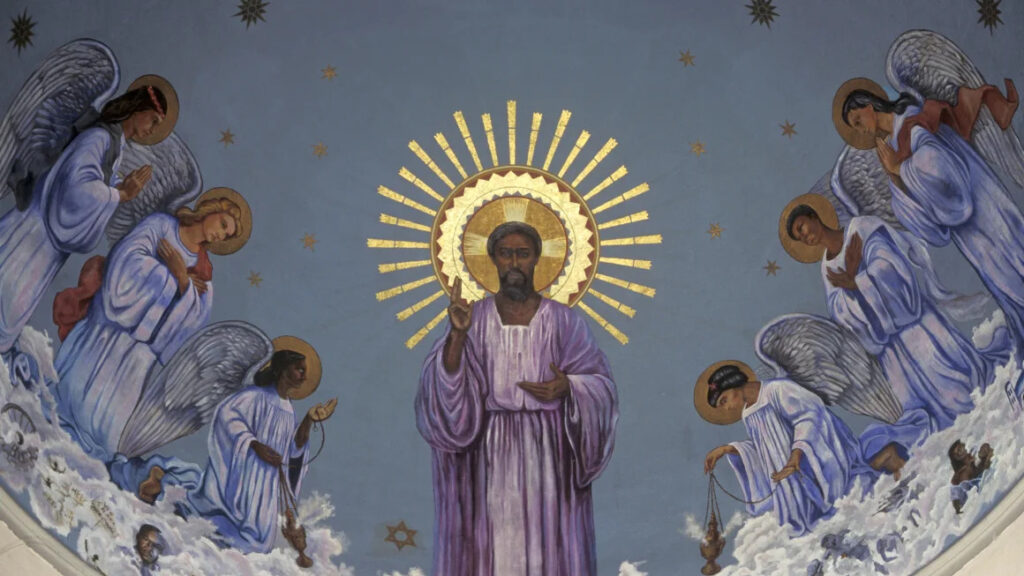Artists have depicted Jesus Christ in various ways throughout history, but some recent examples have caused controversy. The Catholic world is disturbed by recent depictions of Jesus Christ in the art world.
The latest example is from Italy, Capri. The controversy surrounding a “blasphemous” art exhibition in the town of Carpi in northern Italy escalated on March 28, when a masked assailant slashed a painting depicting Jesus receiving oral sex from St. Longinus.
The attacker then turned the blade on the artist, Andrea Saltini, who attempted to intervene. Saltini’s exhibition, “Gratia Plena,” hosted at the Museo Diocesano within Carpi’s Church of Saint Ignatius, has drawn condemnation from Catholic associations due to its provocative imagery, despite the museum’s stance of support.
According to local news outlet Il Resto del Carlino, Saltini was hospitalized and later discharged with four stitches for his injury, while the assailant remains at large.
Another incident happened in Seville, Spain in February. Conservative Roman Catholics in Seville, Spain, have raised objections to a poster depicting Jesus Christ, designed to promote Easter week, considering it offensive.

The poster features Christ in a half-nude portrayal with a beard and long hair, his lower half covered by a white cloth, set against a saturated red backdrop. Created by Seville-based artist Salustiano Garcia, the artwork aims to showcase “the radiant side of Holy Week” in the “purest style of this prestigious painter,” according to the council of brotherhoods and guilds overseeing Easter week events in Seville.
Holy week, commemorating the death and resurrection of Jesus, is marked by extensive celebrations in Seville. Spain’s ruling socialist party leader and former Seville mayor, Juan Espadas, defended the artwork, emphasizing its blend of “tradition and modernity.” The Archbishop of Seville also supported the work expressing artistic freedom. However, some criticized the perceived sexuality of the poster, with the conservative Catholic group IPSE condemning it as “shameful” and “effeminate.” The far-right Vox party leader, Javier Navarro, accused the poster of seeking to provoke rather than encouraging Holy Week participation.
The artist, Salustiano Garcia, defended his creation, stating that the inspiration came from his son. He dismissed the claims of sexuality in his image, asserting that there was nothing in his painting that had not already been represented in artworks spanning centuries.
Jesus and ‘White Supremacy’ discussions
Another controversy surrounding the depiction of Jesus has emerged regarding his racial identity. Some artists have chosen to portray Jesus as African American, challenging the conventional portrayal of him as white. This artistic choice aims to provide representation to African American communities and challenge the historically entrenched notion of a Eurocentric Jesus.
By depicting Jesus as African American, these artists seek to offer a more inclusive and diverse representation of Christ that resonates with people of color. This portrayal also prompts conversations about the cultural and historical contexts of Jesus’ life and the implications of his racial identity for contemporary interpretations of Christianity.

On March 31, CNN’s John Blake’s article was asking; Was Jesus a man of color? Why this question matters more than ever, he speaks about the painting that depicted Jesus as a black man. In a painting displayed at the Coptic Museum in Cairo, Jesus is depicted as resurrected, surrounded by his astonished disciples, among them “Doubting Thomas” reaching out to touch the wound in Christ’s torso. The artwork resembles an ancient relic, evoking imagery reminiscent of discoveries from long-forgotten desert monasteries in the Holy Land. Rendered in a Byzantine style, the fresco features sharply contoured figures and bursts of color, with hues of deep blue and blood orange saturating the scene. Blake speaks about Christena Cleveland, Ph.D., a social psychologist, public theologian, author, and activist, the founder and director of the Center for Justice + Renewal, which supports a more equitable world by nurturing skillful justice advocacy and the depth to act on it and how her point of view about Jesus Christ’s color has changed.
As with any artistic interpretation of religious figures, depictions of Jesus as African American may spark debate and controversy, reflecting broader discussions about race, identity, and representation within religious and artistic spheres.
The portrayal of Jesus as a white, European man has faced renewed scrutiny during this period of introspection regarding the legacy of racism in society. As protests called for the removal of Confederate statues in the U.S., activist Shaun King suggested that murals and artwork depicting “white Jesus” should also be reconsidered, citing concerns about how such depictions uphold notions of white supremacy.











